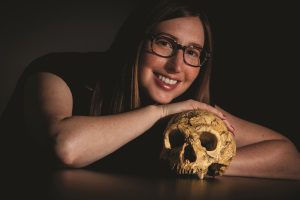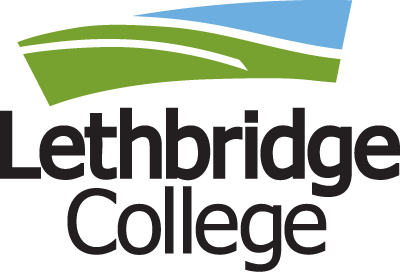Shaylene Wall’s (General Studies ‘00) anthropology and archeology students are a little squeamish when she first introduces them to her impressive assortment of skulls.
when she first introduces them to her impressive assortment of skulls.
But each semester, Wall sees the hesitation of her students turn to excitement as soon as they start passing the specimens around the classroom. Wall’s skull collection is just one of many unusual teaching tools used by Lethbridge College instructors to give students a chance to truly get their hands on a subject.
Using casts of skulls, Wall teaches her students about the fossil record of early hominids, helping them to better understand human evolution, a topic with roots in both anthropology and archeology. The students in her classes say they appreciate the practical experience.
“It gave us the ability to see and touch skulls that are exact replicas of the real life skulls that archaeologists have found,” says Jenessa Korver, who had enrolled in a few General Studies courses last year to prepare for university this fall.
Wall says speaking about human origins can be a difficult subject with people holding a variety of opinions.
“I like to use the visuals to help students actually see that there is a fossil record, that there is scientific evidence to support the theory of human evolution because I find it is kind of hard to make that reference without really seeing what’s out there,” she says. “I’m just trying to get them to appreciate that there is solid evidence to support some of the references that are being made.”
Wall says the opportunity to see and touch the skull casts in class, some of which date back four to five million years, benefits her students because it offers practical experience and introspective learning. “Getting the opportunity to touch the skulls and to look at them and to just feel them gives them a sense of what we came from,” she says. “I think it helps them understand themselves a little more too.”
Wall observes that using the skulls in her classes also helps students appreciate the subjects they are studying – anthropology and archeology – as well as related topics such as history, fine arts, zoology and geography. “There are a lot of different avenues that you’re integrating,” she says, “so I think it helps students understand diversity.”
If students are interested in this kind of hands-on learning opportunity, or would would like to learn more about anthropology and archeology, they can register in HUM165: Introduction to Archeology or HUM195: Cultural Anthropology. Both courses are open to all college students and can be used as science electives for university transfer.


